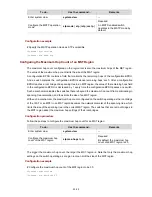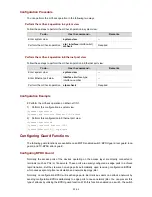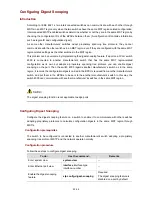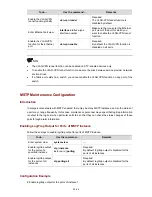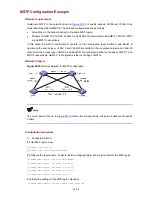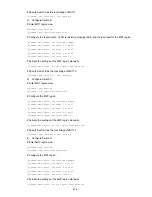
20-34
Configuration Procedure
You can perform the mCheck operation in the following two ways.
Perform the mCheck operation in system view
Follow these steps to perform the mCheck operation in system view:
To do...
Use the command...
Remarks
Enter system view
system-view
—
Perform the mCheck operation
stp
[
interface
interface-list
]
mcheck
Required
Perform the mCheck operation in Ethernet port view
Follow these steps to perform the mCheck operation in Ethernet port view:
To do...
Use the command...
Remarks
Enter system view
system-view
—
Enter Ethernet port view
interface
interface-type
interface-number
—
Perform the mCheck operation
stp mcheck
Required
Configuration Example
# Perform the mCheck operation on Ethernet 1/0/1.
1) Perform this configuration in system view
<Sysname> system-view
[Sysname] stp interface Ethernet 1/0/1 mcheck
2) Perform this configuration in Ethernet port view
<Sysname> system-view
[Sysname] interface Ethernet 1/0/1
[Sysname-Ethernet1/0/1] stp mcheck
Configuring Guard Functions
The following guard functions are available on an MSTP-enabled switch: BPDU guard, root guard, loop
guard, and TC-BPDU attack guard.
Configuring BPDU Guard
Normally, the access ports of the devices operating on the access layer are directly connected to
terminals (such as PCs) or file servers. These ports are usually configured as edge ports to achieve
rapid transition. But they resume non-edge ports automatically upon receiving configuration BPDUs,
which causes spanning tree recalculation and network topology jitter.
Normally, no configuration BPDU will reach edge ports. But malicious users can attack a network by
sending configuration BPDUs deliberately to edge ports to cause network jitter. You can prevent this
type of attacks by utilizing the BPDU guard function. With this function enabled on a switch, the switch



